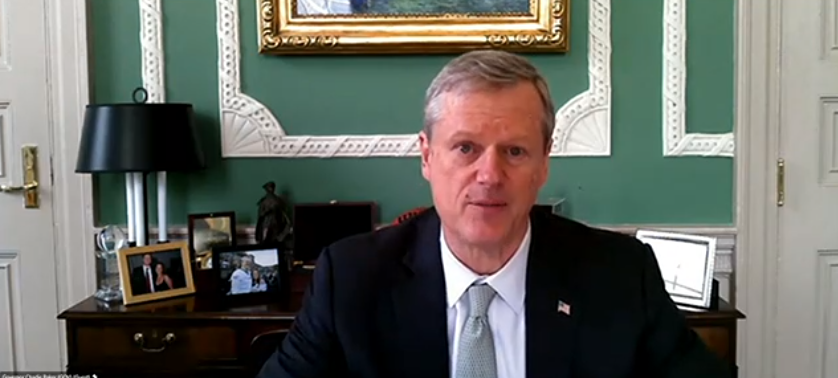Massachusetts Gov. Charlie Baker announced Thursday that the state will move into Phase 3, Step 2 of its reopening plan on Monday, including indoor performance venues and recreational activities.
He also announced that the state will move into Phase 4, Step 1 on March 22, which will allow large indoor and outdoor arenas and ballparks like Fenway Park, Gillette Stadium and TD Garden to admit up to 12% of capacity. New York announced a similar move earlier this month.
WATCH ANYTIME FOR FREE
>Stream NBC10 Boston news for free, 24/7, wherever you are. |
“Opening day is in our near future,” said Lt. Gov. Karyn Polito, co-chair of the state's Reopening Advisory Board.
Get updates on what's happening in Boston to your inbox. Sign up for our >News Headlines newsletter.
"We're almost there," added Baker. "We're going to continue to move forward and if all goes according to plan and the feds increase supply [of vaccine] we could be in a very different position a couple, three months from now."
The Red Sox said in a statement that they plan to have fans at Fenway for the 2021 regular season, which is scheduled to begin on April 1. Additional information is expected to be released in the coming weeks.
Gillette Stadium and TD Garden also issued statements in the wake of Baker's announcement.
"As the region’s largest outdoor venue, we are confident in our ability to provide a safe and comfortable environment and look forward to welcoming fans back home to Gillette Stadium this spring," Gillette Stadium said in its statement.
The Bruins and Celtics shut down their 2019-20 seasons last March when the pandemic reached the U.S. and finished up on the road in “bubble” environments established by their leagues. Their 2020-21 seasons began this winter in home arenas but without fans.
Gillette Stadium and Fenway Park have been used as mass vaccination sites. Baker said he did not know what would happen with that capacity when the venues return to their regular purposes.
Venues in Phase 3, Step 2 include concert halls, theaters and other indoor performance spaces. They will be allowed to reopen at 50% capacity with up to 500 people. Indoor recreational activities with greater potential for contact like laser tag, roller skating, trampoline parks and obstacle courses will also be allowed to reopen at 50% capacity.
Capacity limits across all sectors with capacity limits will be raised to 50%, and restaurants will no longer have a percent capacity limit and will be allowed to host musical performances. Six foot social distancing, limits of six people per table and 90-minute limits remain in place.
In addition to stadiums being allowed to open in Phase 4, Step 1 on March 22, gathering limits for event venues would be relaxed to accommodate up to 100 people indoors and 150 people outdoors, while private gathering limits will remain at 25 outdoors and 10 indoors.
The new guidance on gathering sizes means that convention and meeting halls will be allowed to reopen in accordance with the limits, and overnight summer camps and dance floors at weddings and other events will be permitted.
The progress in the state's economic reopening reflects improving infection rates, with steep declines in both new cases and hospitalizations since a post-holiday peak in January.
The positive test rate in Massachusetts fell below 2% this week for the first time since October, and currently sits at 1.89%. Large venues were put in the fourth and final phase of the state's reopening strategy, which was dependent on a vaccine being available.
"Today's move is a good sign and a step in the right direction," Baker said. "We would not be here making this announcement if we didn't think we had seen, almost for two months now, positive trends on cases and hospitalizations."
Baker also testified before the Legislature on Thursday on his vaccine rollout, but didn't include that on his public schedule for the day. After absorbing criticism for aspects of the rollout, Baker has been touting progress on it all week.
Some "new normal" aspects of the governor's reopening plans hinge on vaccines, which are being rolled out but have still not reached the bulk of the adult population in need of inoculations.
The Associated Press and State House News Service contributed to this report.



